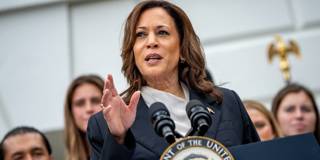While the polls suggest a close US presidential election and political deadlock, the odds of a Democratic sweep are rising. Should one party control the White House and both houses of Congress, it is more likely to be the Democrats than the Republicans, who are clearly out of their depth now that Harris is Trump’s opponent.
CAMBRIDGE – Regardless of who wins November’s US presidential election, Vice President Kamala Harris or former President Donald Trump, there is little doubt that the outcome will have a profound impact on the country’s political climate. The economic implications, however, are less clear, owing to Trump’s lack of interest in policy and the Harris campaign’s efforts to divert attention from the increase in grocery prices under Joe Biden.

CAMBRIDGE – Regardless of who wins November’s US presidential election, Vice President Kamala Harris or former President Donald Trump, there is little doubt that the outcome will have a profound impact on the country’s political climate. The economic implications, however, are less clear, owing to Trump’s lack of interest in policy and the Harris campaign’s efforts to divert attention from the increase in grocery prices under Joe Biden.